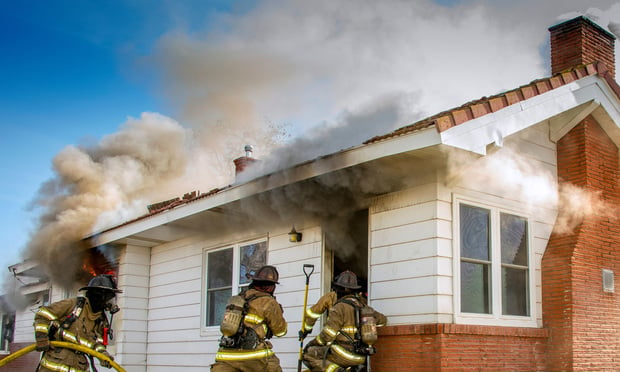
Paul Colbert has seen it all, from allegedly crippled people walking again and the infirmed riding horses to the blind seeing again, as if by divine intervention. While the investigator and founder of Meridian Investigative Group acknowledges the entertainment factor of some of these outlandish cases, his overarching concern is that people, authorities especially, simply do not take workers' compensation fraud seriously. Recently Colbert spoke with Claims Editor in Chief Christina Bramlet about how this type of fraud weighs on the P&C insurance community, how to deter it, and why we all have a lot at stake.
Are fraudsters becoming more brazen? If so, then is the current scarcity of jobs a significant factor?
Absolutely—fraud is on the rise and with more and more personal injury attorneys entering the marketplace, there certainly is no shortage of brazen claimants out there willing to take a crack at the workers' comp system in particular. I think the reason these individuals are so bold is that often times they actually feel they are entitled to a claim. The negative stereotype that all insurance companies are greedy is alive and well in the U.S. Many presume that insurers are “out to take [their] money,” adding even more fuel to the fire when it comes to actually filing a claim.
Additionally, claimants are well prepared by plaintiff counsel, as to the possibility of an investigation, and the typical measures employed by insurance fraud investigators. Still, fraud is an age-old problem. The economic downturn, coupled with high unemployment rates, have noticeably contributed to the recent spike in fraudulent claims. Unfortunately, fraud is a relatively low-risk, high-reward type of crime. Until our government takes a stronger stand in the prosecution of such crimes, we will undoubtedly continue to see monumental increases in fraud and in insurance expenses and claims costs across the board.
Tell us about a memorable fraudster and what aroused suspicion on the part of the insurer.
Numerous examples come to mind. In the case of Kathy V., for instance, the carrier sensed there was more to the story but lacked actual tipoffs. Acting on its hunch, the insurer contacted our investigative staff. We then suggested conducting a claimant profile report (CPR) to determine if there was evidence to substantiate the concern of the carrier. In doing so, we found that Kathy V. was an avid horse rider, who planned to attend a local rodeo in the very near future. Providing that information to the carrier was enough to justify multiple days of surveillance. The investigators were aware that she would be attending the rodeo; however, they were shocked to observe her riding in the barrel races. The procurement of this evidence resulted in a very strong case for the carrier. Clearly this fraud was blatant.
Are certain types of injuries commonly exaggerated? Any prevalent schemes?
One area of concern is soft tissue injures to the lower back and extremities. These injuries can be difficult to quantify, as they are typically measured through range of motion and other various modalities that simply are not 100-percent accurate. Furthermore, pain levels are measured on a scale of one to 10 because there is no accurate medical measuring device for pain, thus leaving the diagnosis vulnerable. What fraud detection methods are the most effective?
 We [here at Meridian] have a pending trademark on our newest product, CPR, which combines information from social networking sites with our own unique investigative methodology. While other investigative companies may use social networking sites to gain information for their clients, we use the CPR product for fast, reliable information.
We [here at Meridian] have a pending trademark on our newest product, CPR, which combines information from social networking sites with our own unique investigative methodology. While other investigative companies may use social networking sites to gain information for their clients, we use the CPR product for fast, reliable information.
How does this CPR product work?
The best way to explain how it works is to provide you with an example. Let's assume the case involves an individual who cannot report to work because of head, neck, and shoulder injuries. This person asserted that he was receiving benefits and was completely unable to work. In this situation, our customary protocol would be to wait for the client to request surveillance, or to wait until our investigative team had accumulated enough evidence to demonstrate to the insurance company that the situation warranted surveillance.
By conducting a CPR, we were able to obtain more than a few clear cut fraud indicators or “red flags.” In the end, the time and expense associated with providing this information to our customer were reduced as a result of employing our custom process. Once the adjuster had reviewed the CPR, there was no doubt that surveillance was justified.
How large a role does social media in gathering evidence?
At Meridian, we simply do not rely on social media sources as fact. Instead, we use them as an investigative tool to assist our operations team in developing a sound surveillance plan.
In your opinion, what might fraud cost the P&C insurance industry each year?
According to the SAS Institute Inc., fraud costs P&C $30 billion each year in the U.S. alone. That figure is projected to rise as both opportunistic and professional fraud continue to grow. Today it is estimated that more than 10 percent of all insurance claims are fraudulent. Insurers often accept fraud as the cost of doing business because it is not cost-effective to pursue fraudulent claims after settlement.
Want to continue reading?
Become a Free PropertyCasualty360 Digital Reader
Your access to unlimited PropertyCasualty360 content isn’t changing.
Once you are an ALM digital member, you’ll receive:
- Breaking insurance news and analysis, on-site and via our newsletters and custom alerts
- Weekly Insurance Speak podcast featuring exclusive interviews with industry leaders
- Educational webcasts, white papers, and ebooks from industry thought leaders
- Critical converage of the employee benefits and financial advisory markets on our other ALM sites, BenefitsPRO and ThinkAdvisor
Already have an account? Sign In Now
© 2025 ALM Global, LLC, All Rights Reserved. Request academic re-use from www.copyright.com. All other uses, submit a request to [email protected]. For more information visit Asset & Logo Licensing.








